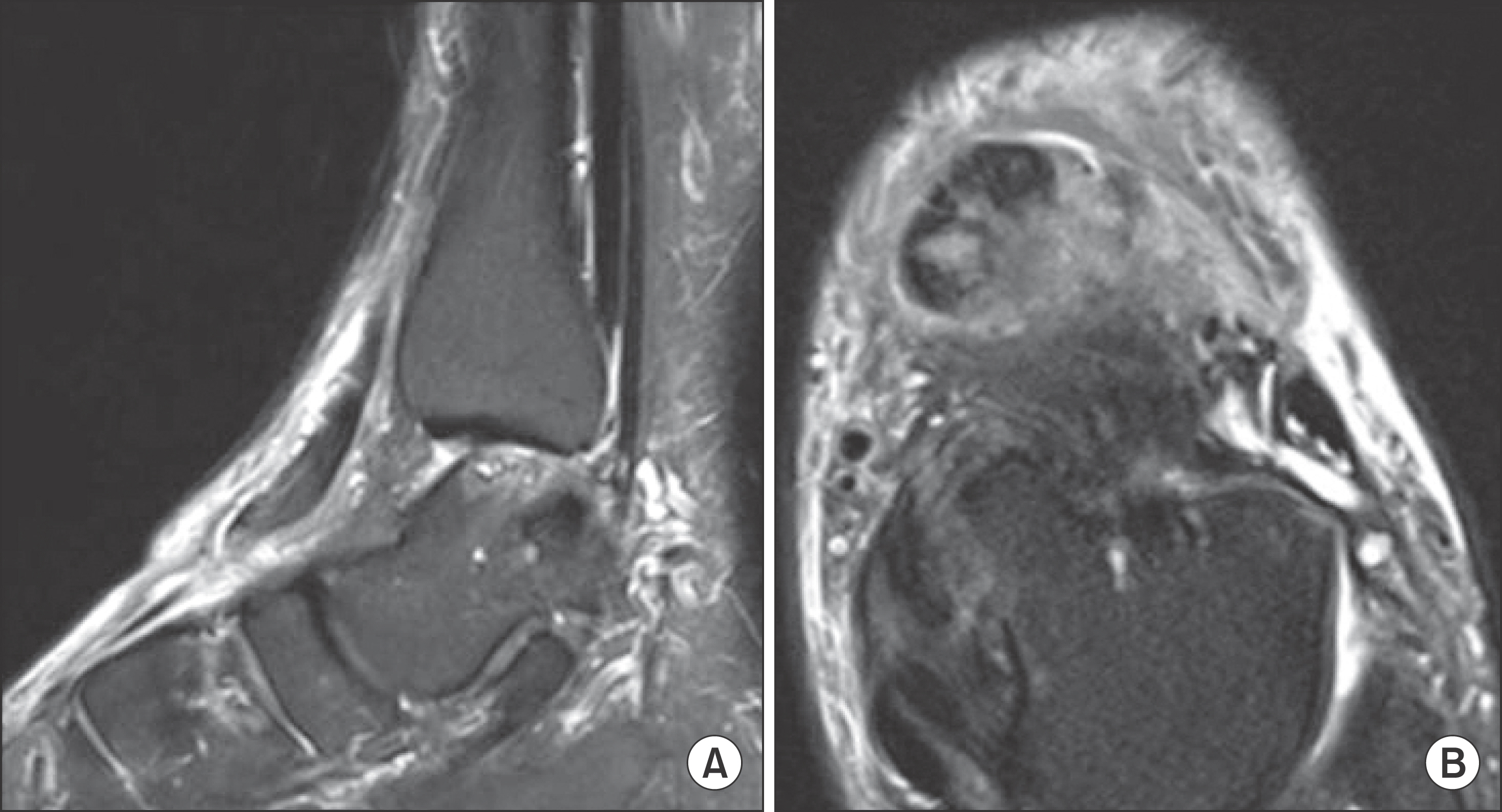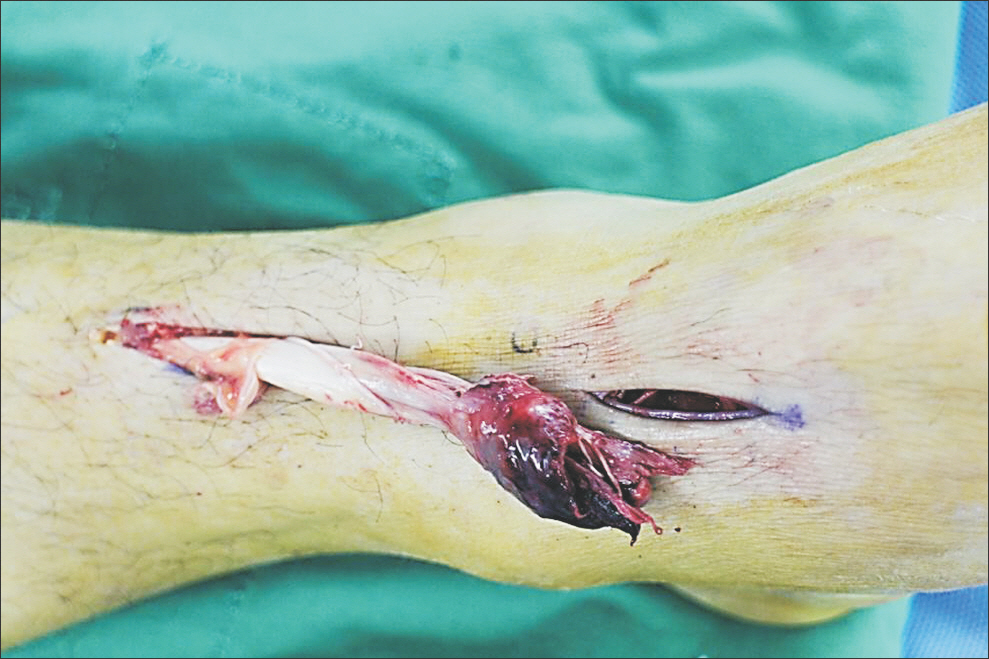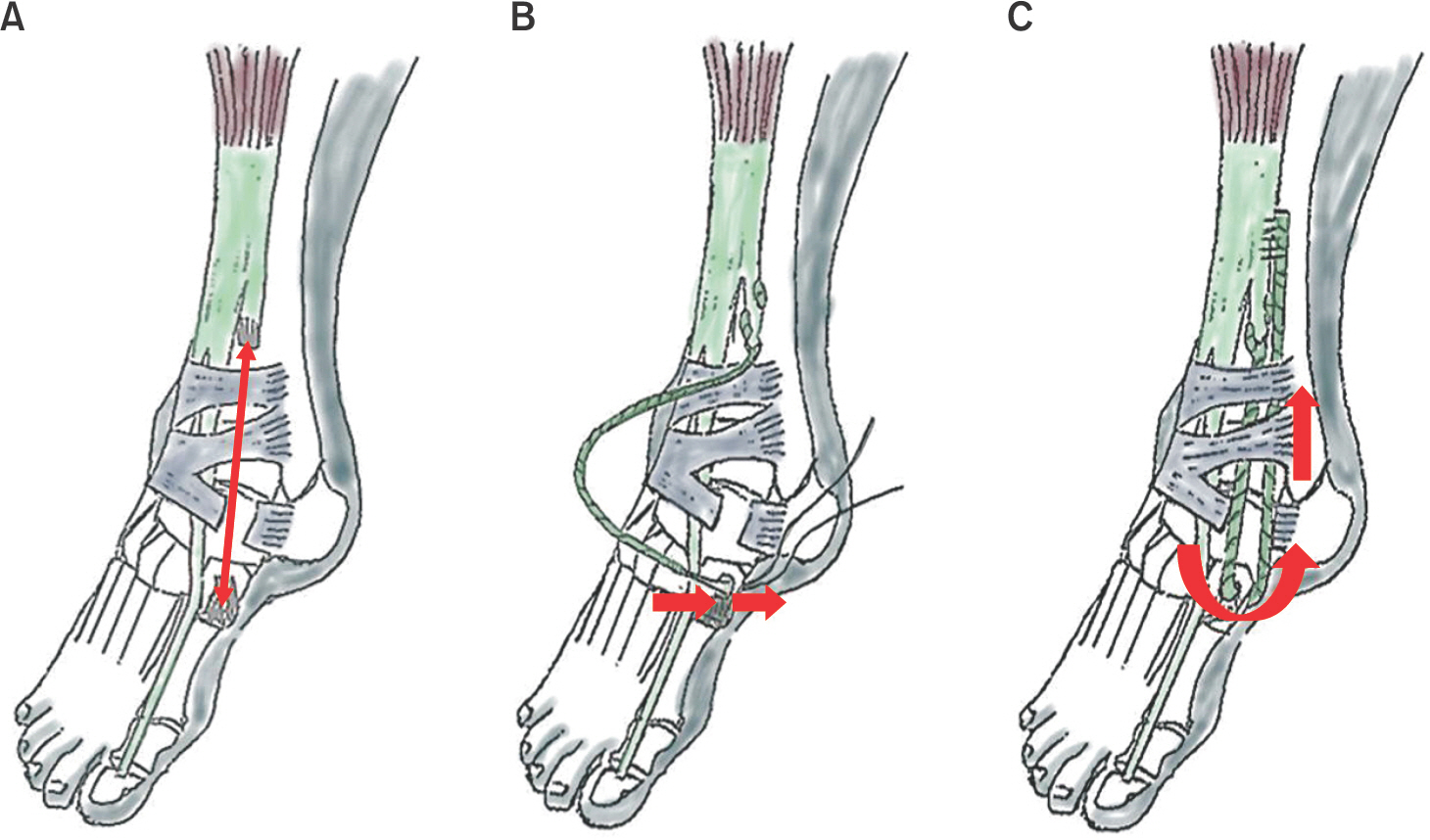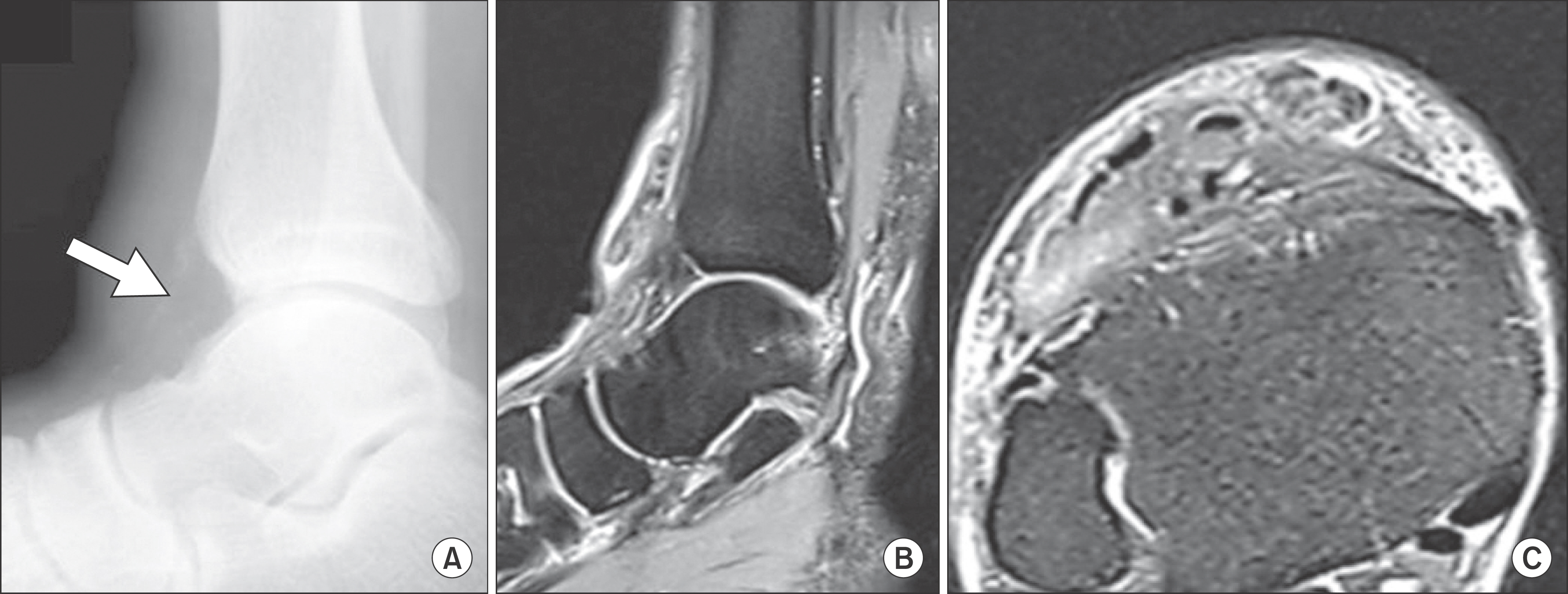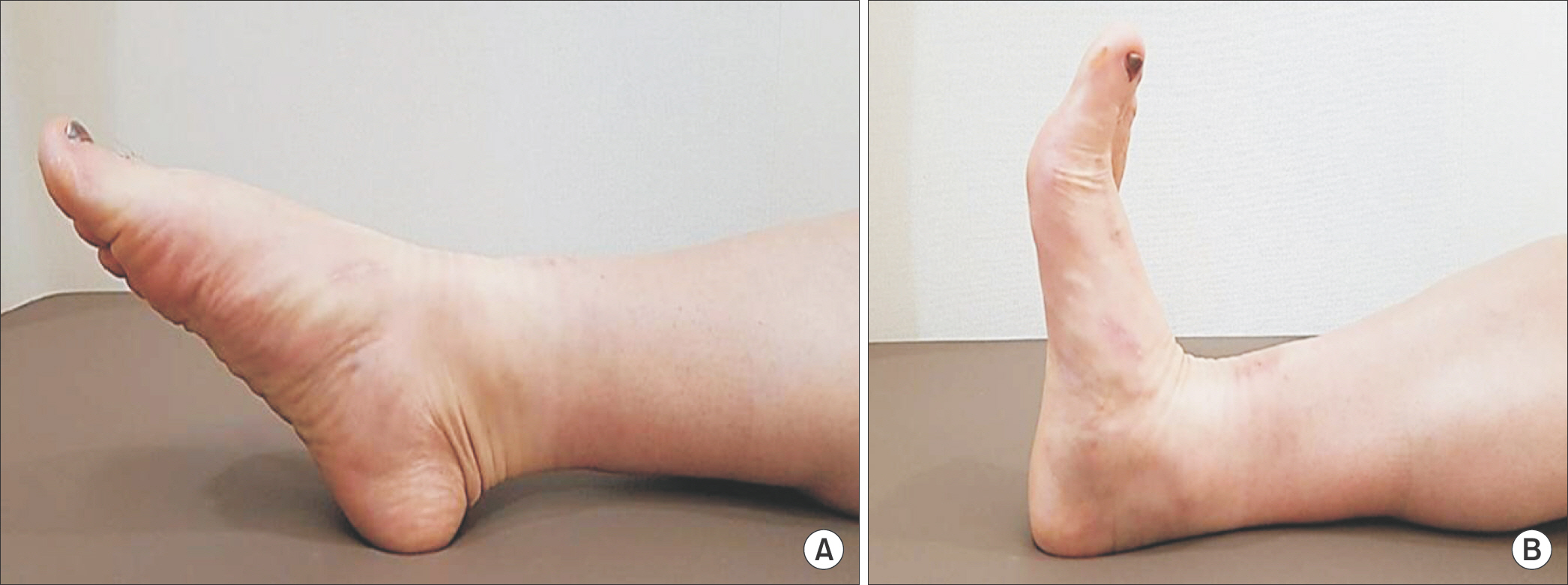J Korean Foot Ankle Soc.
2016 Dec;20(4):182-186. 10.14193/jkfas.2016.20.4.182.
Chronic Tibialis Anterior Tendon Rupture Treated with Semitendinosus Autograft: A Report of Two Cases
- Affiliations
-
- 1Department of Orthopedic Surgery, Gacheon University Gil Medical Center, Gachon University School of Medicine, Incheon, Korea. phk@gilhospital.com
- KMID: 2362767
- DOI: http://doi.org/10.14193/jkfas.2016.20.4.182
Abstract
- The tibialis anterior tendon functions as a major dorsiflexor of the ankle. A rupture in this tendon can cause serious problems in the ambulatory function. A closed traumatic rupture without open wound or an atraumatic rupture can delay diagnosis and treatment. There are not enough guidelines for an effective surgical treatment on this chronic condition. Herein, we report two cases of chronic tibialis anterior disruption successfully treated by semitendinosus autograft.
Figure
Reference
-
1.Cornwall MW., McPoil TG. The influence of tibialis anterior muscle activity on rearfoot motion during walking. Foot Ankle Int. 1994. 15:75–9.
Article2.Markarian GG., Kelikian AS., Brage M., Trainor T., Dias L. Anterior tibialis tendon ruptures: an outcome analysis of operative versus nonoperative treatment. Foot Ankle Int. 1998. 19:792–802.
Article3.van Acker G., Pingen F., Luitse J., Goslings C. Rupture of the tibialis anterior tendon. Acta Orthop Belg. 2006. 72:105–7.4.Sammarco VJ., Sammarco GJ., Henning C., Chaim S. Surgical repair of acute and chronic tibialis anterior tendon ruptures. J Bone Joint Surg Am. 2009. 91:325–32.5.Kausch T., Rütt J. Subcutaneous rupture of the tibialis anterior tendon: review of the literature and a case report. Arch Orthop Trauma Surg. 1998. 117:290–3.
Article6.Wong MW. Traumatic tibialis anterior tendon rupture-delayed repair with free sliding tibialis anterior tendon graft. Injury. 2004. 35:940–4.
Article7.Grundy JR., O’Sullivan RM., Beischer AD. Operative management of distal tibialis anterior tendinopathy. Foot Ankle Int. 2010. 31:212–9.
Article8.Michels F., Van Der Bauwhede J., Oosterlinck D., Thomas S., Guillo S. Minimally invasive repair of the tibialis anterior tendon using a semitendinosus autograft. Foot Ankle Int. 2014. 35:264–71.
Article9.Yasui Y., Takao M., Miyamoto W., Matsushita T. Reconstruction using an autograft with near complete preservation of the extensor retinaculum for chronic tibialis anterior tendon disruption. Arch Orthop Trauma Surg. 2013. 133:1669–73.
Article10.Yasuda K., Tsujino J., Ohkoshi Y., Tanabe Y., Kaneda K. Graft site morbidity with autogenous semitendinosus and gracilis tendons. Am J Sports Med. 1995. 23:706–14.
Article
- Full Text Links
- Actions
-
Cited
- CITED
-
- Close
- Share
- Similar articles
-
- Spontaneous Degenerative Rupture of Extensor Hallucis Longus Treated with a Split Tibialis Anterior Tendon Autograft: A Case Report
- Chronic Longitudinal Rupture of the Tibialis Anterior Tendon: A Case Report
- Clinical Features of Tibialis Anterior Tendon Rupture
- A 12-Week Rehabilitation Protocol for the Management of Chronic Extensor Hallucis Longus Rupture Repaired with an Autograft of the Semitendinosus Tendon
- Complete Rupture of the Tibialis Anterior Tendon Due to Intratendinous Ganglion Cyst

